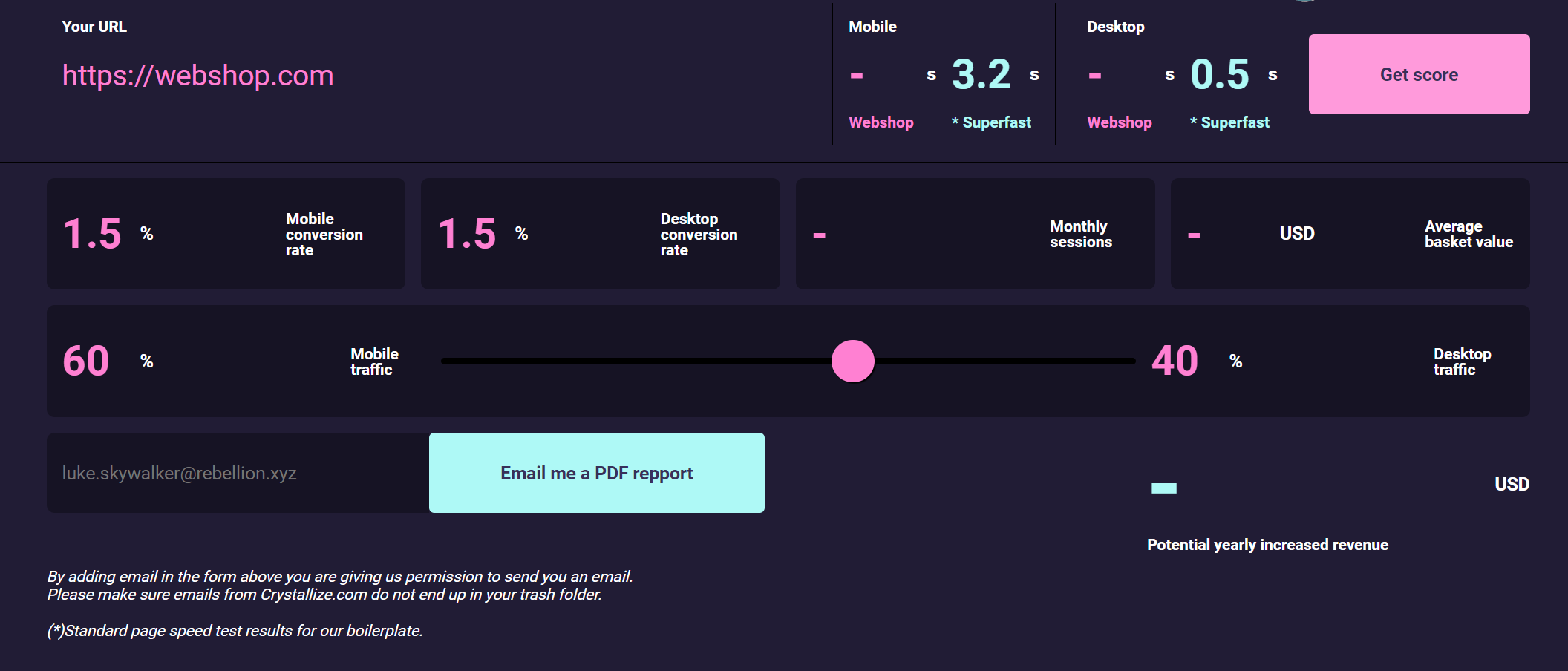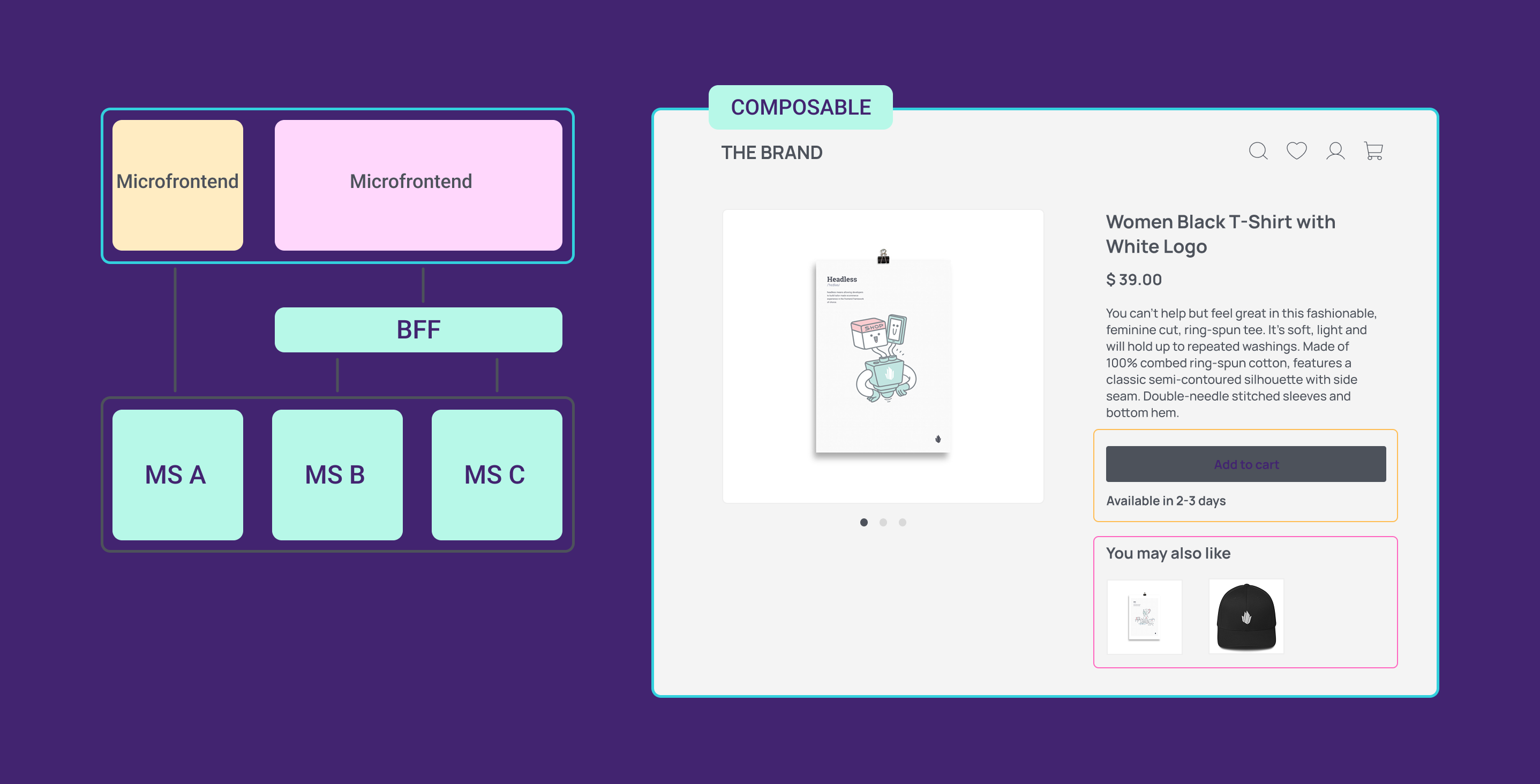What Is Omnichannel Commerce and How It Powers Web, Mobile, and IoT Experiences?
Omnichannel commerce isn’t just a buzzword anymore – it’s an essential strategy for modern retail, shops, and pretty much any digital business.

We talked about multichannel, omnichannel, and marketing before, and while we shared valuable information, we didn't fully explore these topics. Specifically, we lacked insights from diverse industries. Last month, the Product Universe event provided an ideal opportunity to engage with our partners and clients on this subject, enabling us to create a comprehensive guide for your omnichannel initiatives (and do 301s for those old URLs).
Omnichannel commerce refers to providing customers with a seamless, unified shopping experience across all channels, including your website, mobile apps, brick-and-mortar stores, social media, and emerging touchpoints such as voice assistants and IoT devices. The key is that every channel is connected and consistently reflects the same brand, products, and real-time information.
Today, a customer could start browsing a product on their phone, buy it online, pick it up in store, and later reorder via a smart speaker – all as part of one continuous journey with your brand. This goes beyond a basic multichannel setup where each channel might operate in a silo. And it’s more than theory.
So meeting them wherever they are is critical. Businesses with great omnichannel strategies are seeing more sales and happier customers, while those without are falling behind.
With this guide, we aim to help you be one of the former.
Omnichannel vs. Multichannel vs. Single-Channel Commerce
To better understand omnichannel commerce, let’s distinguish it from its close cousin, multichannel commerce, and the simpler single-channel approach (more eCommerce buzzwords). All three involve selling across various platforms, but the level of integration sets them apart.
Single-Channel Commerce
You sell through one channel only, focusing all sales on either a single storefront or platform. For example, a small artisan may only have a physical boutique, or a new brand may sell exclusively online. This can work fine on its own. However, it limits your reach – customers today interact in many places, so relying on one channel means missing those other opportunities.
Multichannel Commerce
You sell on multiple channels (online and offline), but each channel is managed separately. For instance, you might have a website, a physical store, and social media sales, but they operate independently. You might interact with customers on Instagram, via phone, and in-store – a solid start for engagement.
Many retailers are already multichannel, ensuring they have a presence wherever customers look. However, multichannel often lacks coordination: your online store and physical store might have separate inventories or inconsistent pricing. The customer’s experience can fragment as they move between channels.
Omnichannel Commerce
Omnichannel builds on multichannel, taking it a significant step further: all channels are connected into a cohesive, unified experience. The “omni” in omnichannel means that every touchpoint knows and communicates with the others. Customer data, inventory, and messaging are synchronized in real-time across web, mobile, store, and other channels.
The shopper gets a continuity that multichannel doesn’t provide – for example, an item added to a cart in your mobile app can be recalled later on your website, or a return can be handled in-store for an online purchase, hassle-free. In short, omnichannel commerce connects all channels to eliminate friction, providing customers with a seamless, consistent experience regardless of how they switch between platforms.
In practice, without a solid multichannel foundation, true omnichannel isn’t possible (you need those multiple touchpoints first). But simply having many channels isn’t enough – the magic is in the integration and consistency.
For example, a shopper might research a product on your site, receive a retargeting email with an offer, and then buy via your app, picking up the item curbside an hour later. If each of those steps feels unified (with the same product information, no duplicate accounts, and no confusion), you’ve delivered an omnichannel experience. This consistency not only delights customers but also strengthens your brand awareness and recognition.
According to Oracle, ‘consumers today are highly connected and expect businesses to meet them where they are with a seamless experience across channels (source)’ – doing so is key to building loyalty.
Why Omnichannel Commerce Matters: Key Benefits and ROI
Omnichannel commerce is often called a “powerhouse strategy” because it unlocks a range of benefits that single-channel or patchwork multichannel approaches can’t match. Below are some of the top advantages of investing in omnichannel (backed by concrete experience, data, and studies).
Unified Customer Experience (and Higher Satisfaction), Improved Customer Engagement: Today’s customers shop differently than how they did just 10 years ago. However, they expect convenience and consistency across all brand touchpoints. By breaking down silos between online, mobile, and physical touchpoints, you empower shoppers to interact on their terms – whether that means switching from a chat with a bot to a phone call with support without repeating themselves, or browsing in-store and checking out later via the app. A unified experience boosts customer satisfaction and confidence in your brand. Conversely, failing to provide this can drive customers away.
Retailers that operate on three or more channels often see significantly higher engagement rates – ‘up to 250% more consumer engagement than single-channel retailers, according to some measures’ (source). Each touchpoint – be it an email newsletter, an SMS alert, a push notification, or a social media interaction – becomes part of a unified conversation with the customer.
Increased Sales per Customer: Omnichannel shoppers tend to spend more than single-channel shoppers. A landmark Harvard Business Review study of 46,000 shoppers (already linked above) found that ‘the more channels customers used, the more they spent in store – customers who used 4+ channels spent an average 9% more in-store compared to those who used only one channel’.
Similarly, market data shows retailers using three or more channels can increase consumer engagement and sales significantly – one analysis noted ‘a 9,5% annual increase in revenue on average’ (source) from robust omnichannel customer engagement. Simply put, making it easy for customers to shop on any channel often translates to higher revenues.
Greater Customer Loyalty and Retention: Not only do omnichannel customers spend more, but they also stick around. The HBR study also revealed that within six months of an omnichannel shopping experience, these customers had ‘23% more repeat shopping trips with the retailer’.
Loyalty increases when customers feel understood and catered to at every turn. In fact, companies with strong omnichannel engagement retain, on average, 89% of their customers, compared to only 33% for companies with weak omnichannel strategies. That’s a huge retention gap – it highlights how delivering a cohesive experience encourages people to keep coming back.
Higher ROI and Customer Lifetime Value: Because of increased spending and retention, the lifetime value (LTV) of an omnichannel customer is typically higher. One study found ‘omnichannel shoppers deliver a 30% higher lifetime ROI than single-channel shoppers’ (source). They engage more frequently and make more purchases over time, improving metrics such as average order value and repeat purchase rate.
Additionally, an Aspect Software report noted that ‘businesses adopting omnichannel strategies see 91% higher year-over-year customer retention rates (source) compared to those that don’t’ – a direct boost to ROI.
Broader Reach and Market Penetration: An omnichannel presence allows you to meet customers wherever they prefer to shop (online marketplaces, social commerce, mobile apps, voice assistants, IoT devices, etc.), effectively boosting brand visibility and opening doors to new customer segments, strengthening competitive position.
Higher Sales and Revenue Growth: All of the above lead to faster revenue growth. It is as simple as that. One study noted that companies with omnichannel customer engagement see, on average, ‘a 179% increase in annual revenue growth rate compared to companies without omnichannel efforts’ (source).
For example, a customer who tries a product in-store but isn’t ready to buy can later be retargeted online and converted there (instead of walking out and forgetting). Or an online shopper who can return in-store might be more willing to purchase, knowing returns are easy, potentially leading to an upsell during the store visit.
💡Secret Ingredient Between Revenue and User Experience.
User experience can easily make or break businesses. In the speed-obsessed world of today, performance = better user experience.
We all heard the phrase 'every second counts', right? Ever wondered how much it costs, i.e., what revenue faster pages may generate for your online store?
We have a nifty little tool to help you out with that Page Speed ROI Calculator. Have a go at it.

Omnichannel strategies aren't just about boosting sales across different channels; they also bring a bunch of other cool benefits to the table.
Better Inventory Management and Fulfillment Efficiency: Omnichannel commerce forces (and enables) you to integrate inventory and fulfillment systems, which yields operational benefits. When you unify your inventory data across channels, you have better stock visibility and can avoid stockouts or overstocks by reallocating products to where they’re needed.
Imagine your online shop and physical stores share a single inventory. When both draw from and update a central system (ideally a PIM), you eliminate the risk of selling an out-of-stock item online or having an empty store shelf while the warehouse is full.
Additionally, offerings like ship-from-store or store pickup for online orders become easier and more accessible, which can reduce shipping costs and delivery times. All of this leads to more efficient operations – fewer lost sales due to unavailable products and lower inventory carrying costs.
Richer Data and Personalization: One often overlooked benefit of omnichannel commerce is the wealth of data it generates and the ability to aggregate it. When a customer interacts across multiple connected channels, you can build a much richer 360-degree profile of their preferences and behavior. This fuels better personalization, which today’s consumers also expect at every turn.
Moreover, tracking customers across channels yields insights for your business: you learn which touchpoints drive sales, how online and offline influence each other, and can optimize marketing spend accordingly.
Strategic Flexibility and Future-Proofing: Consumer behavior is constantly evolving – new channels and technologies emerge (consider how quickly TikTok or voice shopping via Alexa gained popularity). An omnichannel approach, especially one built on flexible, modern tech (discussed more below), positions you to quickly adopt new channels and meet customer expectations in new places.
Many brands are already exploring IoT and emerging channels, such as smart fridge reordering or AR/VR shopping experiences. If your core commerce platform is already unified, plugging in an IoT device or a new social commerce app is much easier. This adaptability is a competitive advantage in an era when change is the only constant.
How to Implement an Omnichannel Commerce Strategy?
Building an omnichannel strategy may seem daunting, but it becomes much easier when you break it down, especially with the right platform backing you up. It's not just about the tech; your team's mindset needs to shift, too.
1. Deeply Understand Your Customer (Research and Map the Journey). Every successful omnichannel initiative starts with knowing your customers inside out. Go beyond basic demographics – dig into their behaviors, needs, and preferences. Analyze how your customers currently interact with you: Do they research online and then buy in-store, or vice versa? Which channels (app, website, social media, email, chat, etc.) do they prefer for support or discovery?
This research will help you map the customer journey in detail, as well as your buyer persona. It will help you identify pain points in the current experience – e.g., customers may not be able to see store inventory on your website, or mobile checkout is cumbersome – and prioritize fixing those. The goal is to view your business from the customer’s perspective.
2. Identify Key Channels and Use Cases. Omnichannel doesn’t mean every possible channel; it means the right channels for your customers, integrated effectively. Based on your research, identify which channels are most important and what role each plays. For example, a fashion retailer might find that Instagram is crucial for discovery, the website for transactions, and physical stores for experiential engagement and pickups.
List out all customer touchpoints – website, mobile web, native app, physical store(s), online marketplaces, social platforms, email, SMS, customer service phone line, etc. – and see how they currently connect (or don’t). Then prioritize the channels where your target customers spend time and ensure you have a presence and capability there. Basically, for each channel, define its purpose in the customer journey.
3. Connect and Integrate Your Channels. This step is the heart of omnichannel: ensuring that all these channels actually communicate with each other.
Key areas of integration include: inventory (so that online reflects store stock and vice versa), order management (so an order can be placed on one channel and tracked or returned on another), customer data (so a customer’s profile, preferences and history are unified), and content (so product information and pricing are consistent everywhere).
Achieving this might involve adopting an omnichannel commerce platform (like Crystallize) or a combination of tools that share data. Modern businesses are increasingly utilizing headless architectures and APIs to make data accessible across all touchpoints. The guiding principle is: the customer should feel like each channel is just a different window into the same store or system.
For example, if a customer adds an item to cart via your chatbot, that item should appear in their cart on the website too. Such integration often involves unifying databases or enabling different software systems to work together. Invest in technology that enables this connectivity. The point is to eliminate channel-specific silos.

4. Ensure Consistency in Branding, Content, and Pricing. Alongside the technical integration, pay attention to the customer-facing consistency. All channels should reflect a unified brand voice and messaging. Marketing campaigns should be coordinated across channels (omnichannel marketing) so that, for example, a promotion is available online and in-store simultaneously (it’s frustrating for a customer to see a discount advertised on social media, then not have it honored in the store due to disconnects).
Consistency also means offering the same product information, pricing, and loyalty rewards everywhere (unless a deliberate strategy says otherwise). Utilize a central Product Information Management (PIM) platform or content management system to update product details once and then propagate them to all channels.
Consistency builds trust, which in turn builds loyalty.
5. Personalize Across Channels Using Data. Once your channels are integrated and consistent, leverage that integration to personalize the experience at a whole new level. Omnichannel enables you to transfer a customer’s context from one channel to inform another.
For example, if you know a user has browsed certain categories on your site, you can show them related items or a tailored homepage in your app the next time they visit. Or if a customer abandoned a cart online, your store can see that and tactfully assist or remind them if they walk in. This kind of personalization is powerful: it makes customers feel remembered and valued. To do it, funnel your cross-channel data into a Customer Data Platform (CDP) or similar system that aggregates interactions. Or use AI or recommendation engines to act on this data in real time (like showing “items you might like” that encompass both online and in-store behaviors).
6. Train Your Team and Align Operations. Technology alone won’t deliver a great omnichannel experience – your people and processes need to support it. Educate your staff on the omnichannel strategy and their role in it. Break down internal silos by encouraging departments to work together. By getting everyone on the same page, you ensure that the customer experiences a smoothly operating machine rather than disjointed fragments.
7. Continuously Test, Measure, and Adapt. Omnichannel commerce is not a “set it and forget it” project – it’s an ongoing effort of optimization. Once you roll out integrated channels, monitor the results closely. Use analytics to see how customers are moving through your new omnichannel journey. Are more people using the buy online/pickup in-store option? Has the average basket size changed now that you introduced cross-sells between channels? Identify drop-off points or new friction that might arise and iterate on them.
Regularly review emerging trends (such as social commerce features, new marketplace platforms, and AR/VR experiences in retail) and experiment where it makes sense. The brands that succeed long-term are those that continually innovate their omnichannel strategy.
Building a solid omnichannel commerce operation is a significant undertaking, but the rewards, including satisfied customers, loyalty, and increased sales, make it well worth the effort. Just follow these steps to get there.
The Tech Backbone of Omnichannel: Headless and Composable Commerce
To truly nail omnichannel commerce, you need to upgrade your technology stack. Traditional all-in-one platforms and POS systems often struggle to deliver a seamless experience across all channels, particularly when incorporating new technologies like IoT or voice assistants. That's where modern approaches, such as headless and composable commerce, come in – they provide the flexibility and integration power you need for today's omnichannel world.
In headless commerce, the “head” (front-end) is separated from the “body” (backend). This separation is incredibly useful for omnichannel because it means any device or interface can talk to the same backend services to retrieve products, inventory, content, and perform transactions. For example, your backend (product catalog, customer accounts, etc.) might live in one system, and you can build a website, a mobile app, a smart mirror in a store, and a smartwatch app all on top of that via API calls. They might all present different UIs, but they pull from the same source. And if a new channel emerges, you can create a new “head” for it and plug it into the same backend without redoing your entire system.
Hand-in-hand with the concept of headless is the idea of composable commerce, which involves assembling a commerce platform from modular components, ideally selecting the best-of-breed solution for each capability, and integrating them via APIs. This approach is beneficial for omnichannel because it enables you to tailor and scale each part of the system to meet the specific needs of each channel.
For instance, you could use a robust CMS to manage rich content for web and mobile, while a specialized point-of-sale system handles in-store transactions, and connect them so they share data. If one piece needs an upgrade or swap (say, you want to incorporate a new personalization engine), you can do so without overhauling everything.
Composable commerce is essentially about being agile and flexible, much like building with LEGO blocks.
Let’s talk specifically about Crystallize as an example in this space. Crystallize is a headless commerce platform (with a strong Product Information Management component) that was built to support precisely the kind of omnichannel experiences we’re discussing. Because we’re headless and API-driven, developers can use Crystallize’s backend to manage products, content, and orders in one place, and then deliver that to any frontend or device – be it a React web storefront, a native mobile app, or an IoT application – via GraphQL APIs.

This means a retailer using Crystallize can have a single source of truth for their product data and inventory, and confidently expose shopping functionality in multiple channels, knowing the data is consistent everywhere and anywhere. Being headless is what allows consistent experiences across channels with minimal friction. For instance, you could build a VR showroom experience using Crystallize’s APIs to fetch product info, while simultaneously running an online store and feeding a digital kiosk in your shop – all orchestrated by the same backend.
In a modern composable commerce stack, a headless platform like Crystallize plays the role of the central commerce engine and content hub. Around it, you might integrate other services, such as Algolia for search, Stripe for payments, Fiserv’s Carat for payment processing or data insights, a marketing automation tool, etc. Each service addresses a specific need and, through integration (often via middleware or direct API connections), they collectively deliver the omnichannel functionality. The advantage of positioning Crystallize or any headless backend as “one of many tools” is that you’re not locked into a single vendor’s ecosystem – you can choose the optimal components and have them work together.
Why Omnichannel Commerce Is No Longer Optional?
Embracing omnichannel opens up new opportunities and resilience. During COVID-19 lockdowns, businesses with robust e-commerce and curbside pickup options survived and thrived, whereas purely brick-and-mortar ones struggled. Omnichannel gives you the agility to weather such changes by engaging customers in multiple ways.
By building an omnichannel framework now, you position your business to easily plug into emerging trends, staying current with your audience.
Omnichannel commerce has moved from a competitive advantage to a baseline expectation. It is here to stay, and it’s becoming the new normal for how customers interact with brands.
The consequence of doing it right is very positive: you build a brand that customers trust and prefer because it’s effortless to shop with you anywhere. The consequence of neglecting it, however, can be losing relevance in an increasingly customer-centric marketplace.
Wonder how Crystallize can help you run, grow, and scale your business across different channels?
BOOK a personalized 1-on-1 demo today, and we’ll show you what makes Crystallize a powerful product story engine well suited for modern omnichannel business.
Or, why not SIGN UP for FREE and start building.
Frequently Asked Questions about Omnichannel Commerce
Q: What is the difference between omnichannel and multichannel commerce?
A: Multichannel commerce means selling to customers on multiple channels (online, in-store, social media, etc.), but often each channel is managed separately. Omnichannel commerce connects those channels into one unified system. The omnichannel approach ensures a consistent, seamless experience across all platforms.
Q: Why is omnichannel commerce important for retailers?
A: Omnichannel commerce has become crucial because consumer shopping habits have changed. Shoppers routinely bounce between online and offline touchpoints – for instance, researching a product on their phone, seeing it in a store, and buying later on a laptop or mobile phone.
Q: What kind of technology is needed to support omnichannel commerce?
A: The tech stack for omnichannel usually includes: a centralized commerce platform or suite (this could be an all-in-one omnichannel platform or a combination of integrated systems for e-commerce, point-of-sale, etc.), a unified database for customer and product data, and robust integration via APIs. Many retailers are turning to composable commerce platforms because they enable the seamless integration of multiple frontends from a single backend. If you take the composable route, you might choose best-of-breed components, such as a dedicated PIM for product information, a separate CMS for content, and ensure they’re all integrated to communicate with each other.
Q: What are some real-life examples of omnichannel commerce in action?
A: There are many! The following examples share a common theme: customers can transition seamlessly from one channel to another.
- Starbucks is a classic omnichannel example. Their mobile app, website, and in-store experience are all linked via their loyalty program. You can reload your Starbucks card on the phone, and the update is instantly reflected in your account, which the barista can see. You can order on the app and pick up in store without waiting.
- Amazon (with Whole Foods/Amazon Fresh) lets you blend online and offline: you can order groceries online and choose home delivery or store pickup; in some locations, you can scan the app to enter a store (Amazon Go) and just walk out with items (the app charges you).
- Nike: They have seamlessly integrated their Nike Plus app with the in-store experience. In the app, you can reserve items to try in a store, and when you arrive, a locker opens with your gear. In-store, sales associates use mobile devices to give style recommendations based on your online profile.
- Disney: The My Disney Experience app, which is part of their theme park, integrates with the website and physical park visits. You can plan a trip online, use the app in-park for ride bookings, and a MagicBand wristband tracks everything from hotel room access to photo purchases. It’s one continuous experience from digital to real life.
Q: How does omnichannel commerce affect inventory and fulfillment?
A: Omnichannel has a big impact on inventory management and fulfillment operations. Firstly, it encourages a unified inventory view, which allows capabilities such as showing online shoppers which store has an item in stock (and possibly allowing them to reserve or pick it up), or letting store associates order items for customers from the warehouse if something isn’t available locally. It also enables ship-from-store or ship-to-store flexibility. It enables real-time inventory, which is crucial to omnichannel success, as customers dislike placing an order only to find out it’s backordered due to stock not syncing.
On the fulfillment side, omnichannel tends to blur the lines: your stores might act as mini distribution centers (for pickups and local deliveries), and your warehouses might handle individual e-commerce orders rather than just restocking stores. It’s all about flexibility and efficiency in serving the customer through any route.
You Should Also Read👇

10 Best E‑commerce Platforms for Developers and Business Owners in 2025
Explore 10 leading e‑commerce platforms for 2025—including monolithic SaaS solutions like Shopify, BigCommerce, and Magento; composable headless options such as CommerceTools and Commerce Layer; and unified GraphQL/PIM‑powered platforms like Crystallize. Match your business model, technical requirements, and budget to find the optimal balance of ease‑of‑use, performance, and flexibility.

What Is Composable Commerce?
No longer a buzz term, composable commerce represents a paradigm shift in eCommerce architecture, fundamentally redefining how businesses approach their online shopping experiences. Given the benefits, it’s no wonder.

Product Storytelling in the World of Headless Commerce
At its core, product storytelling is the art of weaving a compelling narrative around a product or service. Instead of just listing features or benefits, you're engaging customers on a deeper, emotional level, offering them a story they can connect with.

